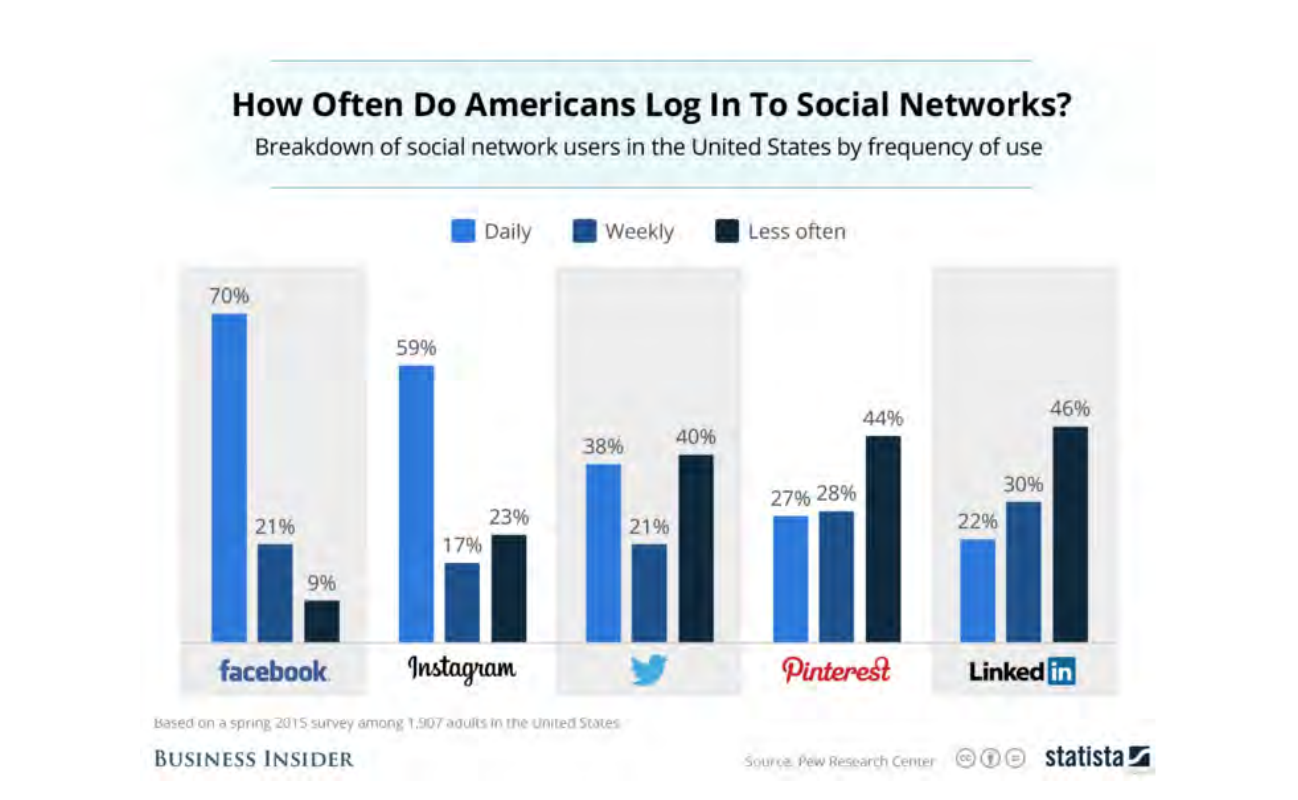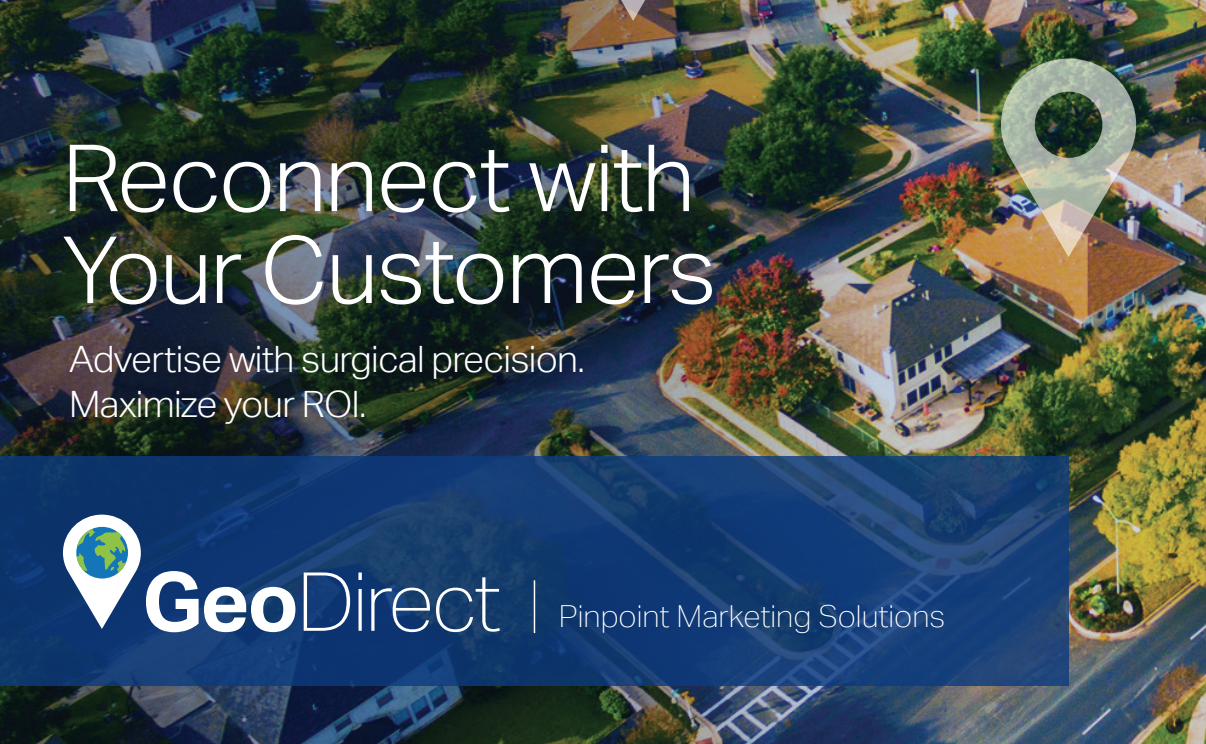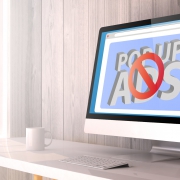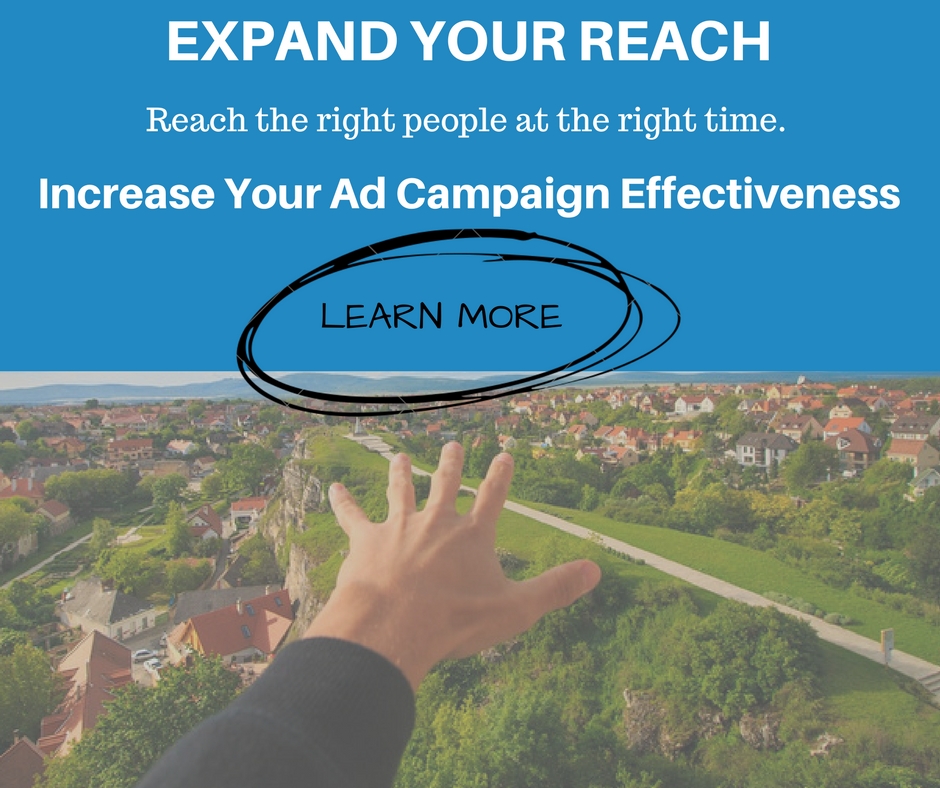Engaging Your Alumni With GeoDirect
/0 Comments/in advertising, marketing, mobile/by 495digitalA New Way to Engage Your Alumni
We’ve all received the cold calls, seen the generic emails, and the snail mail with pictures of happy students and a return address for donations.
This has been the extent of alumni engagement for the last 80+ years.
Did it work? Yes.
Does it work today? Nope.
Alumni engagement is the lowest it has ever been, right around 9% in the U.S. Although the situation appears grim, many schools have started evolving their alumni outreach campaign with innovative technology. And they’re reporting resounding success.
One way schools have been able to reach their alumni is through digital canvassing. Through powerful platforms, like GeoDirect, schools can directly reach their graduates through hyper accurate IP targeting using advanced digital canvassing ad technology.
How GeoDirect Works
The process begins by harnessing the power of offline data. GeoDirect is a patented IP targeting software that matches physical addresses with IP addresses, enabling advertisers to deliver their messages with pinpoint precision to the right person, at the exact time of your choosing.
Rather than casting a wide net over a targeted demographic or geographic location, GeoDirect ad campaigns are directly targeted and delivered to predetermined households and audiences — in this case, alumni.
An ad campaign that’s launched under the helm of GeoDirect delivers results that speak (and pay) for themselves.
Why Use GeoDirect? A Case Study

In 2017, we partnered with Gonzaga College High School, an all-boys Catholic school in Washington, D.C.
They were looking for a new, unconventional way to reach their alumni and increase incoming donations.
We worked with Gonzaga to develop an integrated approach to reach graduates and other potential donors during the school’s Annual Fund campaign. After a series of meetings, we helped them develop a new design concept for print advertising, as well as for online display ads that were directed mail recipients in specific households.
Using the addresses Gonzaga provided to us, we put GeoDirect to work. Its targeting system matched all of those physical addresses with IP addresses. So every person who received a piece of traditional mail from Gonzaga was also shown an online ad soliciting donations.
GeoDirect helped make the connection between what alumni received at home in their mailboxes, and the ads they saw on their computers. It’s a proven way to increase campaign engagement and effectiveness. And, for Gonzaga… it worked.
What Other Industries Use GeoDirect?
GeoDirect can be used in virtually any industry that can benefit from more precise and effective marketing and advertising. GeoDirect has been effectively used to enhance results for the following types of organizations.
- Non-Profits & Charities
- Healthcare
- Insurance
- Financial Services
- Hospitality
- Restaurants
- Home Services
- Automotive
- Sports & Events
- Real Estate
- Retail & Consumer Products
- Political
- Legal
- Government Contractors
It’s time to supplement your direct mail campaign! Contact us today to find out how we can put GeoDirect to work for you.
10 Google Adwords Mistakes That’ll Blow Your Budget in a Heartbeat
/0 Comments/in advertising, marketing/by 495digitalAnyone savvy in digital marketing and its trends will tell you the same thing about Google Adwords: It’s an effective tool for bringing traffic to your website. However, creating a campaign to bring in customers or subscribers can be expensive, and those costs will quickly increase if you’re not careful.
Here are 10 Google Adwords mistakes that can eat up your budget before your eyes.
1. You’re not paying attention to the ‘Quality Score’ aspect.
You might just see a number next to the quality score category and disregard it. However, this is the wrong approach if you want to use Google Adwords effectively. The algorithm assigns a qualitative number to each keyword you use. You should try to get a 7 or greater on every keyword. Better quality scores mean each click costs you less money and raises your ranking in the ad results too. If you want to improve your scores, you need to create good copy, optimize your home page, and use ad groups for each keyword.
2. You keep using the same ads for different keywords.
We mentioned that every keyword needs an ad group to itself, and mistake number two is part of why that is true. The keywords you create need to match the ads very closely. For example, if someone wants a leather recliner, your ads need to focus on leather recliners. They should focus on that instead of focusing on other types of recliners or leather sofas. You’ll get more clicks at lower rates with ads that remain relevant to the keywords.
3. You ignore the split test feature.
Adwords includes a helpful tool that allows you to run multiple copies of a particular ad at the same time. The goal here is to see which ad gets the most clicks within a specified window of time. In this way, you learn what ad generates the most clicks without relying on luck or guesswork. You should use the split test to run at least two copies of each ad and see how many clicks it gets in a given time limit.
4. You don’t use conversion tracking.
So far, everything you’ve done with Adwords is about getting clicks. We want to convert those clicks into actionable things like signups, e-mails, and purchases. If you are not tracking these conversions, you only know how many clicks you’re getting, which doesn’t tell you about the overall success of your site. Use this feature to weed out pointless keywords taking up space without generating income.
5. There are too many irrelevant keywords.
Google Adwords allows you to choose broad phrases for your ad groups or exact matches. You should always choose the latter because using broad phrases will bring back a ton of results that will make your ads appear in places they don’t need to be. Over time, this irrelevancy will reduce your quality score, further eating into your profits.
6. Clicks navigate users to your home page instead of a landing page.
It might seem logical, but don’t link your ads to your home page. What you really want is a simple landing page that sells whatever product the person who clicked on your ad wants to buy. On your landing page, use short copy for low-risk impulse buys and longer copy for more complex needs-based purchases that the user spends some time considering before buying.
7. Your keywords are grouped poorly.
If you don’t group your keywords according to appropriate ad groups, you lose the ability to customize your ads to be a better fit for the potential customer. This means that instead of seeing ads for “laptops,” a customer might just click, see a bunch of electronics, and move on to something else.
8. You’re not including negative keywords.
Adwords can use negative keywords to exclude those that are not a good match for what you’re selling. If you sell heavy winter clothing designed for the cold, you might want a keyword like “jacket” to be included but not one like “light” or “spring”. That’s because either of those will produce results that are not helpful to you.
9. You’re not investing in your own brand.
In digital marketing terms, you need to “bid” on your own brand. If you do not advertise and push your own stuff, a competitor might do just that. That means that another company near you in the results can use your brand and siphon off your customer base. If you have a brand, you should want to be the top result for it.
10. You’ve set unrealistic expectations.
If your budget is small, you can’t expect big things from Adwords, especially not right away. Testing ads and building your campaign will eat through a small budget quickly and if you get nowhere, you may be inclined to give up on the process. Instead, you should save until your budget grows and spend it on a good campaign. This will let you modify the plan as necessary and give you the time you need to stick with it.
If you can avoid these common mistakes in your Adwords campaign, you stand a much better chance of turning your plans into profit and sticking with the platform.
Digital Advertising: 6 Signs You’re Doing it All Wrong
/in advertising/by 495digitalEver heard the name Ethan Zuckerman? If you haven’t, you most likely know his work. In a 2014 article in The Atlantic, Zuckerman admits that he is the architect behind one of the most hated features of traveling online: pop-ads. Calling them the internet’s “original sin,” Zuckerman calls on marketers to find a better way to advertise online.
That doesn’t mean that all ads are created equal, however. At the top of the list for most hated ads are pop-up ads, seemingly confirming Zuckerman’s statement that they are the internet’s “original sin.” Second place is mobile ads with a 70% disapproval rate, followed by video ads that play before other content loads, like on Youtube (57%).
Is Zuckerman right? Do customers really hate online advertising that much?
The answer is both “yes” and a surprising “no.”
While 91% of people say that ads are more intrusive than they were 2-3 years ago and 87% of people are convinced that there are more ads today than there were then, it turns out that people really only hate poorly done ads instead of just advertising in general. 83% of respondents to the same study quoted above agreed with the statement: “Not all ads are bad, but I want to filter out the really obnoxious ones.”
The solution for digital marketers is simple: Make better ads.
Advertisements that actually cause people to be intrigued about a product or service, instead of dazzling people with bright colors, sounds, and a spontaneous appearance from out of nowhere. Indeed, one of the biggest pain points with advertising is the number of accidental clicks, which increases the bounce rate and destroys domain authority. Of respondents, nearly 1/3 of all clicks were accidental. What’s more, nearly half couldn’t tell you what specifically about the ad garnered their click, it “just so happened to interest” them.
In order to create better quality advertisements (ones that actually get real, interested leads), here are a few things to keep in mind.
-
Use Professional Looking Ads
Though this may seem like a no-brainer, it’s surprising how many businesses base their entire inbound marketing strategy off the backs of poorly done ads that look like total garbage. This isn’t purely a complaint about design (color choices, text fonts, etc), but more about when ads look cluttered, disjointed, or downright confusing. If you can afford it, hire a designer; if you can’t, keep it simple.
-
Don’t Use Autoplay
Just don’t. As Michael Scott would say, “Don’t ever, for any reason…no matter what, no matter where…” ever use autoplay on your videos.
Why?
82% of people admit that they have closed out of an entire webpage simply because of the fact that they were forced into watching an ad. If your ad isn’t skippable, don’t include it as part of your marketing plan.
-
Keep It Intelligent
Or, to put it another way, don’t make your consumers feel dumb. More than half of consumers feel like the advertisement is talking down to them, which is insulting and almost always results in a missed opportunity. Don’t make it highbrow by using twelve-syllable words, but don’t also appeal to the absolute lowest common denominator as well.
-
Be Honest With Your Intentions
15% of all ad clicks are performed because – per the customer’s words – the company tricked them into clicking the ad, usually by promising one thing and delivering something vastly different. Misleading your customer base is a fantastic way to spread hatred and ill will among your target demographic.
-
Don’t Use Creepy Retargeting Methods
Have you ever drove into a car lot and stopped at a certain car, only to have the salesperson follow you around and ask you if you’re still interested in that specific car? No? Why not? Because they know that what you’re looking for is maybe not that specific car, but one that was like that car. The same goes for your retargeting methods. The last thing people want is to feel like your company is stalking them through their online journey, so approach retargeting with a bit more finesse.
-
Be Judicious With Pop-Ups
If you’re forced to use pop-ups in your advertising for whatever reason, be selective about where and when you use them. Make them appear after the user has scrolled down the page, watched a video, or received some other benefit. Also, make the “X” on your page big enough that they can click out if they want to. 89% of people say ads that they’re forced to close out are “really frustrating,” so make it easier on them to do so.
Conclusion
While nearly everyone admits that interacting with advertisements is a necessary part of venturing online, the way you go about it can make a big impact on your customer base, whether good or bad. The next time you map out your advertising plan, consider your end customer first and everything else second.
Does Facebook Advertising Really Work for Small Business?
/in advertising, social/by 495digital It’s no secret that small business owners receive hardly any real exposure by simply opening a Facebook business page and posting regularly. The page alone will only reach a small portion of the target audience.
It’s no secret that small business owners receive hardly any real exposure by simply opening a Facebook business page and posting regularly. The page alone will only reach a small portion of the target audience.
So, is it worth spending the time and money to use Facebook ads if you run a small business?
Careful post promotion and the right ad campaign could make a big difference in reaching the hundreds, if not thousands, more Facebook users on a daily basis.
Facebook’s Advertising Algorithm
Because Facebook offers its services for free, it depends on advertising revenue to stay up and running. The social media site uses a complex algorithm that tracks a user’s interests and works to get the right ads into the right newsfeeds.
The algorithm also works against businesses that do not purchase ads by keeping posts that haven’t been promoted from showing up on very many user news feeds. Even if your page has garnered 1,000 likes, each individual post is only available to about 30 Facebook users. For as little as $.027 per click you could purchase ads that will get you seen by far more users. Whether or not that expanded visibility leads to sales depends on how well you utilize your advertising options.
 Make Ads One Part of a Larger Marketing Scheme
Make Ads One Part of a Larger Marketing Scheme
The Facebook platform is designed to promote personal interactions between users. If you simply create an ad that directs users straight to a product or service it will not be as effective.
Be creative with the ads and make them part of the general interaction with potential customers.
Direct interested users to your page and then give them the option to participate in an e-mail marketing campaign.
Taking the time to develop a relationship so the customers feel like they know you and your company will lead to more sales in the short run and more loyal customers in the long run.
 Launch Dark Posts
Launch Dark Posts
Dark posts sound ominous, but they are simply posts that look like regular news feed posts but they do not show up on your timeline and they do not post to fan feeds automatically.
A dark post can include a regular status update, a video, a link, a photo, or a special offer. These posts can be highly targeted to specific fans of your page, which means you can create specific ad campaigns related to a customer’s interests, charitable donations, buying habits, financial data, or other behaviors.
These specific ad campaigns can be powerful tools to help you reach different demographics effectively.
Customize Settings
Businesses that simply open up an ad campaign and leave all the settings at the default setting may not see much difference in traffic or sales. To take advantage of all of the benefits Facebook advertising offers it is crucial to tailor the settings to fit with your specific small business and the customers you need to reach.
Facebook offers geo-targeting tools that can be highly successful when used properly. If your ad campaign does not seem to change the number of visitors or fans on your page, experiment with the settings until you find a combination that brings the maximum number of people to your page.
Conclusion
Bottom line: Facebook ads do work — if they’re used the right way. If nothing else, it gets a business seen by far more users than a business page that is not promoted at all.
Facebook ads are a relatively inexpensive way to reach more potential customers and build stronger relationships with all of your Facebook fans.
The Best Way to Bypass Bot Traffic and Save Your PPC Campaign From Ruin
/0 Comments/in advertising, trending/by 495digital Bots are an ugly part of life for any organization doing business online. There are armies of them, crawling and clicking on ads, creating huge volumes of fake traffic.
Bots are an ugly part of life for any organization doing business online. There are armies of them, crawling and clicking on ads, creating huge volumes of fake traffic.
Advertisers lost an estimated $19 billion as a result bot fraud in 2018, according to Juniper Research (via Which-50.com). That’s the equivalent to $51 million a day.
With bots everywhere (and multiplying quickly), advertisers and online businesses alike must stand up and take note. No doubt it will take sophisticated ad technology and proven traffic-cleansing techniques to prevent bots from taking over, but there is something digital advertisers can do right now to buck the system.
No, we’re not talking about using a shady black hat work-around. We’re talking about a tried and true strategy that will bypass bots and save an advertising campaign from a sinking ROI.
More on this later. But first, some specifics.
The Deal With Bot Traffic
Bot traffic is a form of online ad fraud in which a nefarious individual or group of individuals uses automated software and scripts to drive artificial impressions or clicks. Normally, web traffic involves a visit from a human. With bot traffic, however, non-human computers trigger ad impressions and click ads; thus, costing advertisers big bucks.
 How Digital Ad Fraud Costs Advertisers Big Bucks
How Digital Ad Fraud Costs Advertisers Big Bucks
Bot traffic costs advertisers money in several ways.
If you promote your website on a pay-per-click (PPC) platform like Google AdWords, for instance, a competitor may drive up your advertising costs by sending bot traffic to your ads. Because they aren’t human visitors, bots won’t generate conversions or otherwise improve your return on investment (ROI). They will, however, inflate your advertising costs.
If you advertise on a cost-per-impression (CPM) platform, bot traffic can also cost your money. The websites on which CPM ads are displayed typically earn revenue based on impressions. As a result, some corrupt publishers will purchase bot traffic to inflate their impressions and earn more money. This is bad news for the advertiser who created the ad because he or she pays for low-quality bot traffic.
Signs You’ve Been Blasted by Bots
There are a few tell-tale signs of bot traffic, which one of which is an unusually high click-through rate (CTR) or impression count.
If your PPC ads suddenly have a 50 percent or higher CTR, you might be receiving bot traffic. Alternatively, generating 50,000 ad impressions on a website or channel that usually generates just 2,000 to 3,000 impressions could be a sign of bot traffic.
Scouring through your website logs can also reveal bot traffic. Assuming you have Google Analytics installed, check metrics like bounce rate and average view time. Bots typically visit the site and immediately leave, resulting in a high bounce rate and low view time.
 The Best Way to Win the War Against Bots and Boost Online Ad ROI
The Best Way to Win the War Against Bots and Boost Online Ad ROI
Beating online ad fraud, while complex, can be done. And quite easily too.
The process begins by harnessing the power of offline data.
We rely on a product called GeoDirect. It’s a patented IP targeting software that matches physical addresses with IP addresses offline, enabling advertisers to deliver their messages with surgical precision to the right person, at the right time.
Rather than casting a wide net over a targeted demographic or geographic location, and allowing the bot armies to attack, GeoDirect ad campaigns are directly targeted and delivered to predetermined households and audiences.
An ad campaign that’s launched under the helm of GeoDirect delivers results that speak (and pay) for themselves.
Did we mention that GeoDirect is also connected to all the major ad networks, and can deliver ads like:
- Display
- Text
- Native
- Video
Conclusion
Beating online ad fraud, like any other process for solving a complex problem, is an activity that involves constant analysis and learning from previous experiences. Using a disciplined methodology, like GeoDirect, with specific data parameters and corrective measures can help bypass bot traffic and give online businesses reassurance that they are getting their money’s worth.
About Us
495 Digital is a strategic branding and cross-channel marketing communications agency. We provide a full range of design, marketing, and advertising services including creative, strategy, content development, campaign implementation, and results reporting.
495 Digital, LLC
1308 Vincent Place
McLean, VA 22101







